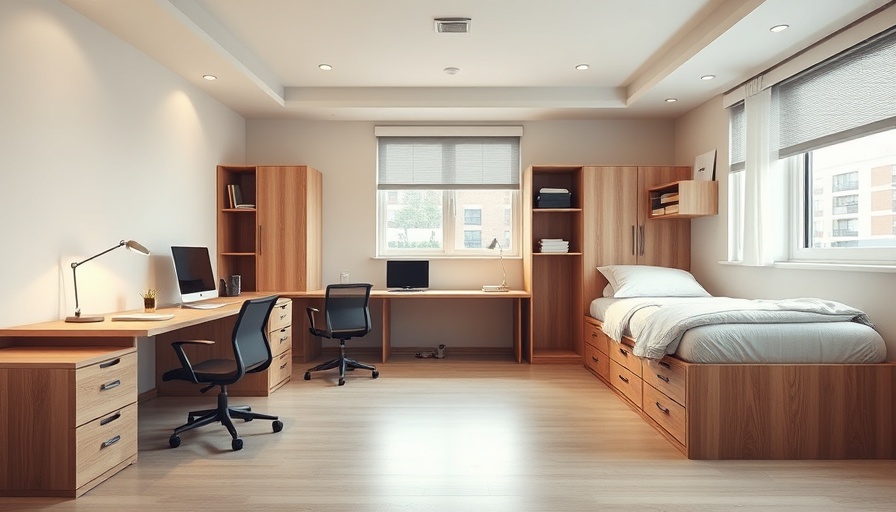
Giving Former Hotels a New Purpose
In recent years, there has been a growing trend of repurposing old facilities, particularly hotels, into functional spaces like student housing. This not only breathes new life into these buildings but also addresses pressing issues like housing shortages in educational institutions. A prime example of this transformation is the recent conversion of a former Hampton Inn in Long Island, New York, into student housing for the New York Institute of Technology (NYIT).
The 53,000-square-foot hotel, which was originally built in 2009 and featured 80 rooms, closed its doors in 2020 due to the COVID-19 pandemic. Fast forward three years, and the hotel was acquired by PX4 Development, which successfully negotiated a long-term lease agreement with NYIT.
Challenges and Innovations in Design
Transforming the hospitality-focused layout of a hotel into a residence for students posed unique challenges. As project manager Carmela Zino, from the design firm TPG Architecture, noted, the need to optimize space utilization was paramount. “We had to evaluate the ideal number of students per room while ensuring that shared spaces were maximized for student use,” she explained.
Unlike hotels that cater to short-term visits, student housing requires a sense of community and an environment conducive to academic success. This necessitated reimagining the traditional guest rooms into comfortable living accommodations while incorporating new common areas for student interactions. The design team created a balance of quiet study zones and recreational spaces, ensuring that students had the resources they needed for both academic focus and socializing.
Modernizing Infrastructure for Sustainability
Alongside the spatial reconfiguration, significant updates were made to the building’s infrastructure. Outdated systems were replaced with modern services, including the installation of energy-efficient LED lighting throughout the facility. These improvements not only enhance the living experience for students but also align with sustainability goals that many educational institutions are pursuing today.
The shift from a traditional hospitality aesthetic to a more vibrant and engaging environment for students reflects a broader trend in design—creating spaces that promote wellness and social connectivity. As highlighted by Zino, fostering a sense of community is essential, and this design philosophy supports both academic and personal development in a conducive atmosphere.
Affordability Meets Quality
The project is also an important step toward addressing the higher education affordability crisis. By transforming existing structures into student housing, institutions can mitigate construction costs and provide more affordable living options for students. The success of this project could serve as a model for other colleges and universities facing similar housing challenges across the nation.
Moreover, repurposing existing buildings aligns with sustainability goals, reducing the need for new construction and minimizing environmental impact. This dual benefit of meeting housing needs while also being environmentally responsible is likely to continue driving similar initiatives in other locales.
Future Trends in Educational Housing
As we examine the implications of converting hotels into student housing, it becomes clear that this trend could shape the future of how educational institutions address housing shortages. Given the ever-increasing costs associated with higher education, more universities might look towards innovative solutions like these to provide their students with quality housing options.
Furthermore, as student housing continues to evolve, aspects such as the incorporation of technology for better connectivity, access to shared amenities, and spaces that cater to diverse needs will be crucial. Understanding the academic and social needs of students will drive future developments in this area.
Final Thoughts
The transformation of a former hotel into student housing for NYIT not only showcases innovative design and adaptation but also highlights a larger movement toward sustainability and community in educational environments. As more institutions recognize the value of these repurposed spaces, the potential for future developments on similar lines remains strong. Ultimately, such initiatives could mitigate the housing crisis while providing environments that nurture academic success and social engagement.
 Add Row
Add Row  Add
Add 






Write A Comment